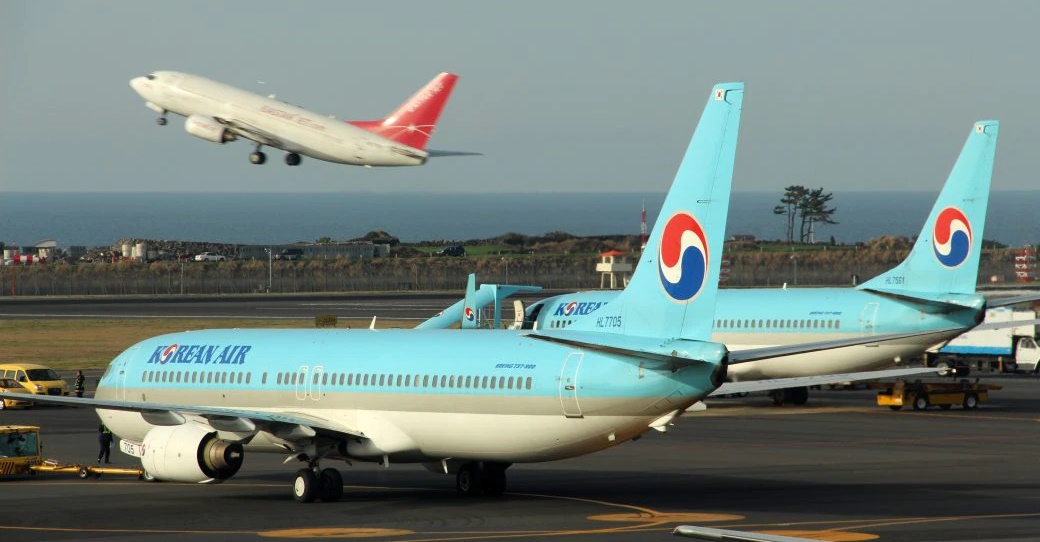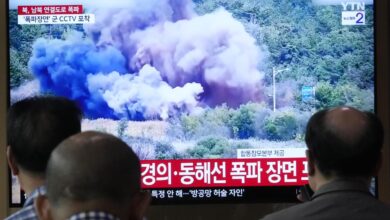The World’s Most Flyed Route: Jeju-do Island
A current ranking reveals which flight route is most frequented worldwide. / The World's Most Flyed Route: Jeju-do Island

Jeju-do Island: On the route in Asia, the planes actually take off every minute. But their destination is not a metropolis like Hong Kong, Tokyo or Beijing, but the island of Jeju-do.
The world’s busiest flight route has been announced – and hardly anyone knows the destination. Or have you ever heard of Jeju-do? If not, that’s not a problem, because the island isn’t just around the corner, but in South Korea. However, it is so popular there that an average of 224 flights per day fly from Seoul to Jeju – that means there are more than 9 flights per hour. In 2021 alone, more than 16 million people flew on the route. According to the OAG, this makes the route the most frequented in the world.
But the question remains: Why does the route from Seoul to Jeju-do Island top the list and not a route to Tokyo, Hong Kong or Beijing?
Jeju-do Island – South Korea’s honeymoon island
Located about 90 kilometers south of the Korean Peninsula, Jeju-do is South Korea’s largest island. The island is not only comparable to Mallorca in terms of size – it is also for South Koreans what “Malle” is for Germans: incredibly popular. Favored by a massive economic boom in the 1970s and 1980s, many South Koreans could afford the luxury of travel for the first time and chose Jeju-do as their destination. Today, not only do many families come here, but Jeju is particularly popular as a honeymoon island. Wedding tourism is so pronounced that the island is now also called “Honeymoon Island”, honeymoon island. At least one attraction on the island today goes back to that nickname – the ‘Loveland Sculpture Park’, which features erotic sculptures and various love positions.
Apart from this bizarre park, the volcanic island inspires above all with its nature, which was almost untouched until a few decades ago. Highlights are the crater Sunrise Peak, the shield volcano Hallasan and many beautiful beaches, such as Seobin Baeksa.
But very few who visit Jeju know about the atrocities that happened here in the past. The horror begins as soon as you arrive, because there is a mass grave directly under the runway.
Jeju-do’s grisly past
What excavations in 2007 unearthed, according to The Washington Post, was evidence of a drama the Korean government allegedly tried to cover up for 60 years, and that no one dear to their hearts dared speak of. On the island, the locals still only speak cryptically of “Jeju 4·3”. This refers to April 3, 1948, the day when the history of Jeju-do Island was rewritten with the blood of tens of thousands of innocent people.
The drama begins a year earlier when the South Korean Workers’ Party called for nationwide protests in order to achieve reunification of the country that had been formally separated since the end of World War II. People also take to the streets on Jeju-do Island. But the law enforcement officers, under the auspices of the United States, who then intervened in this part of Korea as self-proclaimed crisis workers, opened fire and killed six civilians. Countless are captured and tortured. On April 3, 1948, frustrated citizens stormed police stations across the island, an incident that US military governor Major General William F. Dean used as an occasion for a merciless “cleansing process.” Dean suspects, without having any proof, that the leaders of the uprising are the already hated North Koreans.
An estimated 30,000 dead
According to current estimates, around 30,000 people died as a result. According to Atlas Obscura, entire villages were wiped out, 109 between 1948 and 1949 alone. Some once destroyed villages, such as Gonul-dong, can still be visited today. Military tribunals hand down around 2,500 death sentences, often carried out by mass shootings. The victims are buried in collective graves like the one under the airport runway. These grisly events continued even after the Korean War began. In 1954, a tenth of the island’s population was wiped out and a third fled.
In an analysis, Professor Tae-il Kim concludes that there are at least 154 sites on the island where massacres have taken place. An impressive monument is the Baekjoilsonjiji, the “cemetery of the 100 ancestors”. Numerous caves, in which insurgents and civilians hid from the whims of their captors, can also be visited today. However, it would take until 1988 for the world public to learn about the crimes. That year, as a young reporter, Professor Kim began interviewing survivors of the period, giving a face to the Jeju-do drama. In 1992, the remains of 11 people who had been killed by soldiers at the time were found in a cave. A fire was set at the entrance to the cave so that the refugees suffocated from the smoke.
From Dread Island to newlywed destination
However, the South Korean government did not officially apologize for the crimes until 2003. By then, Jeju-do Island had long been a popular holiday destination. Today there is a memorial on the island that records the names, ages and villages of origin of the identified victims.
On the 70th anniversary of the massacre, the South Korean President once again issued an official apology. There are also efforts to exhume the remains of the dead from the mass grave under the airport runway and to hand over their relatives. It’s finally putting an end to Jeju-do Island ‘s dark past and moving towards a hopefully bright future – as South Korea’s favorite island for honeymooners.
Skytrax World Airport Awords 2022: The 11 Best Airports in the World


